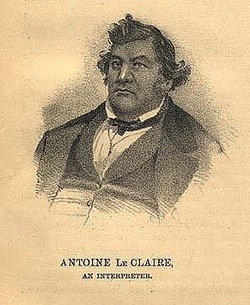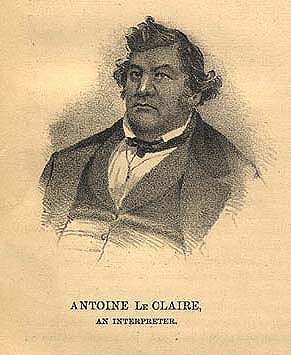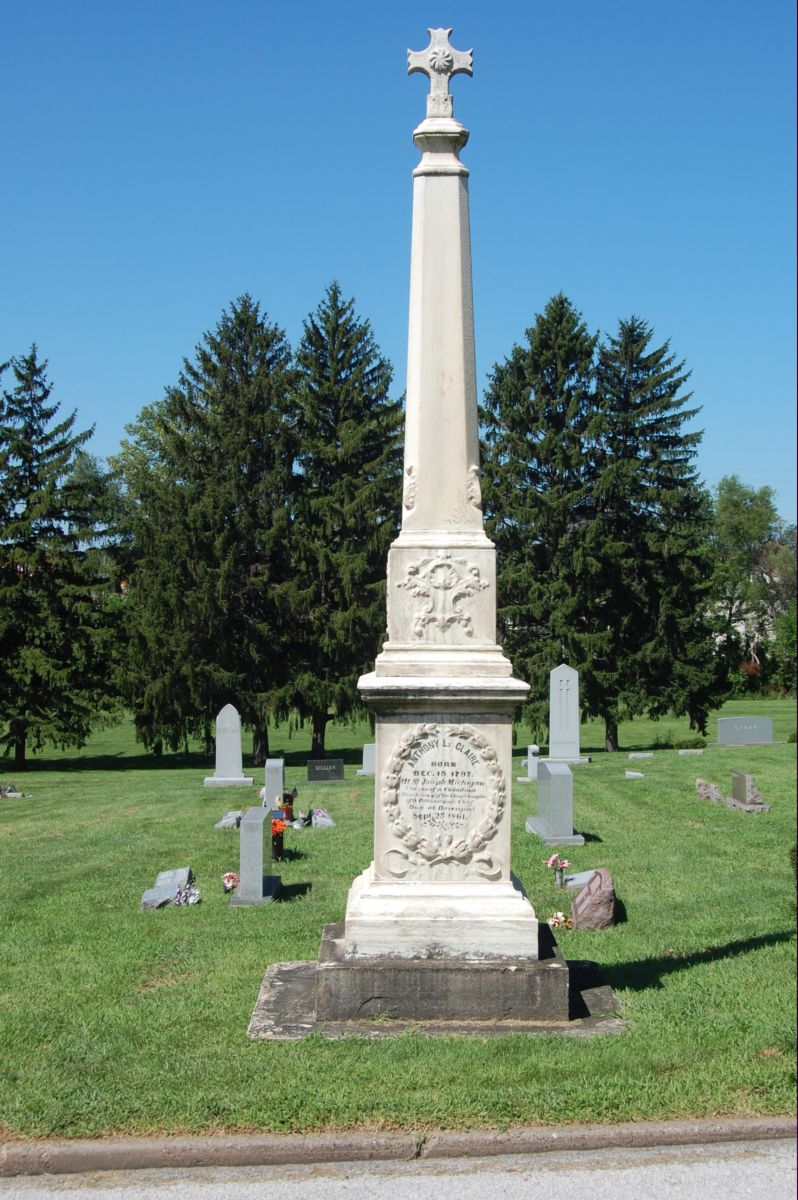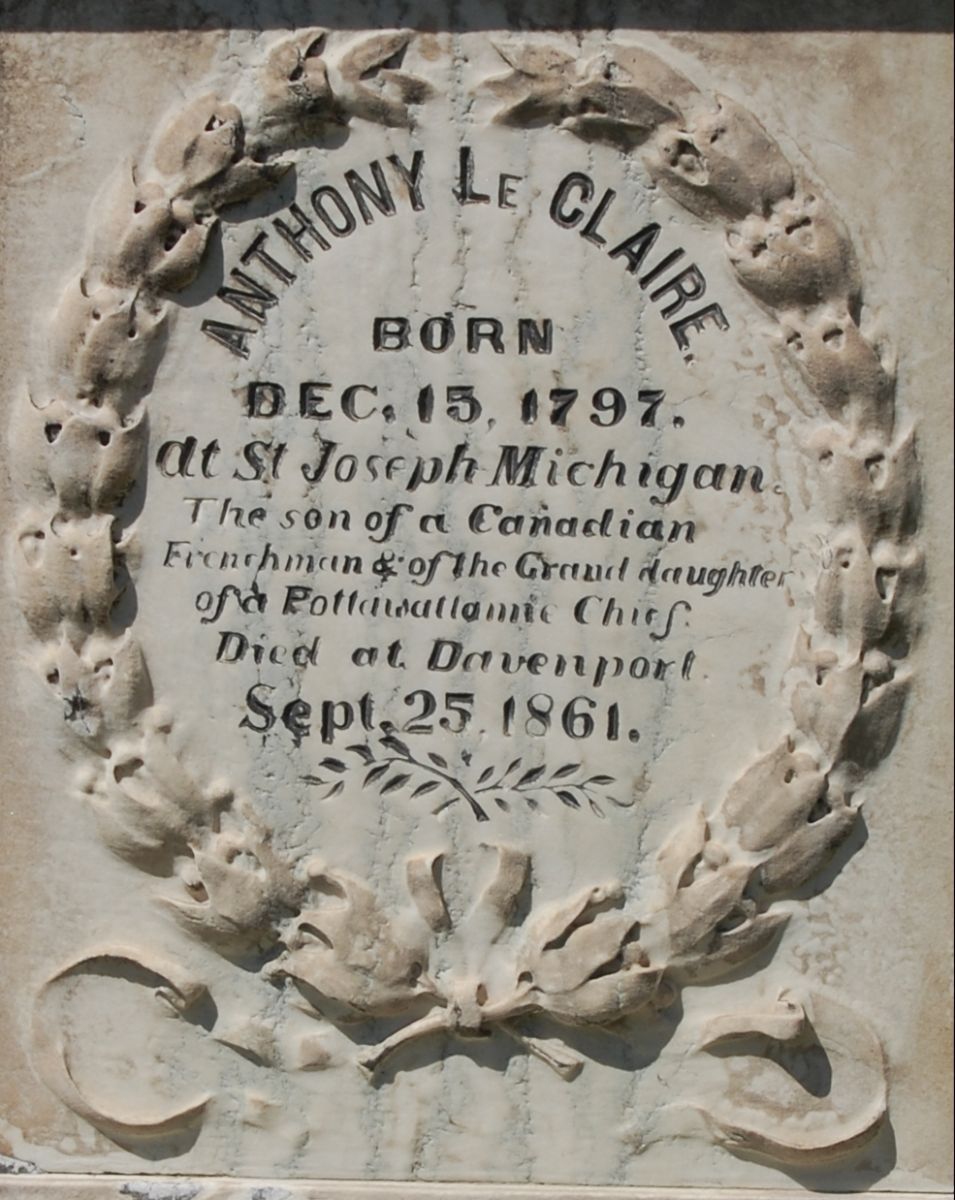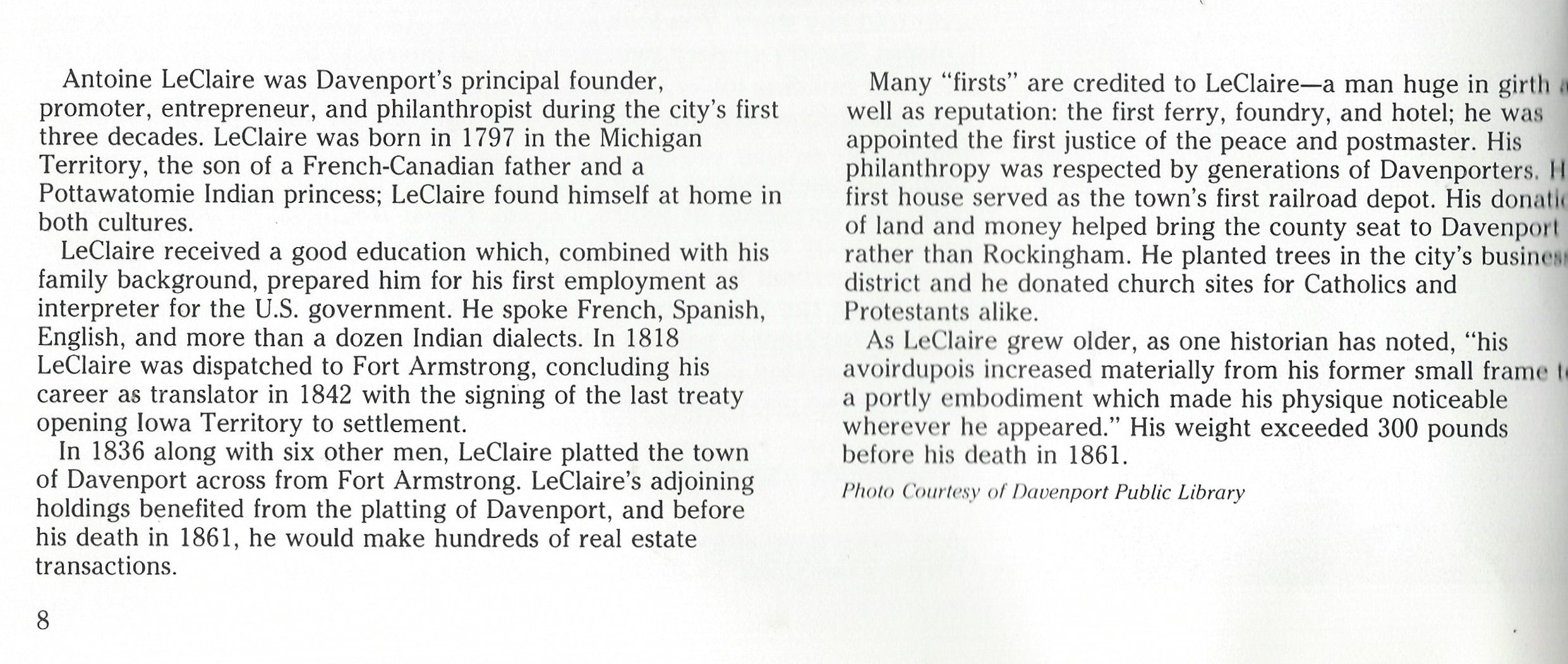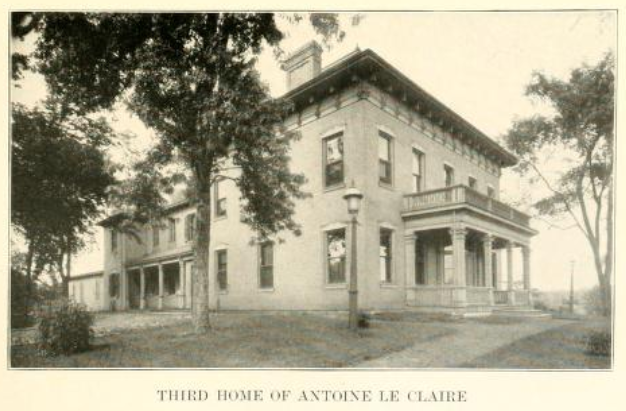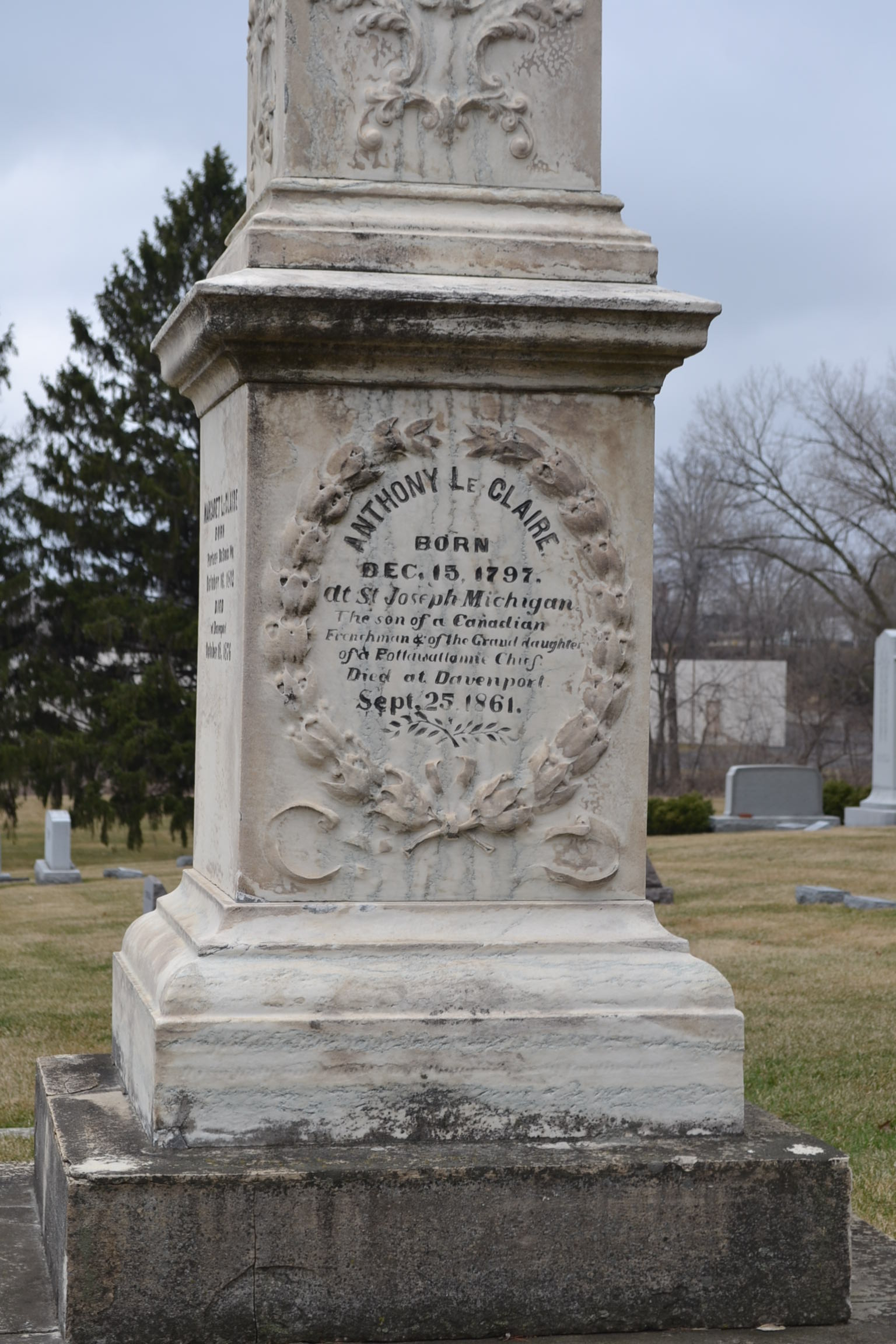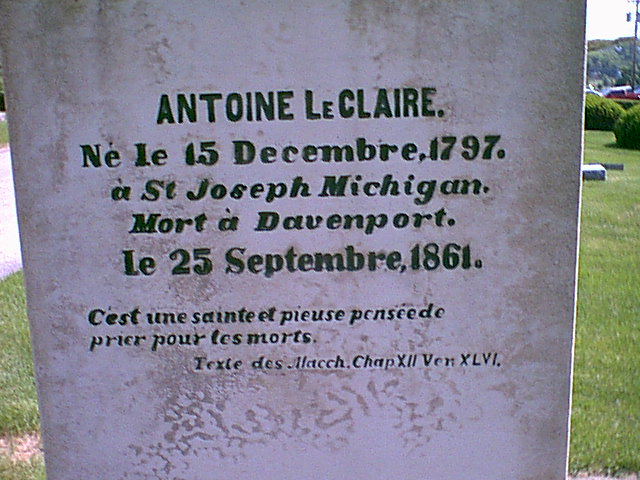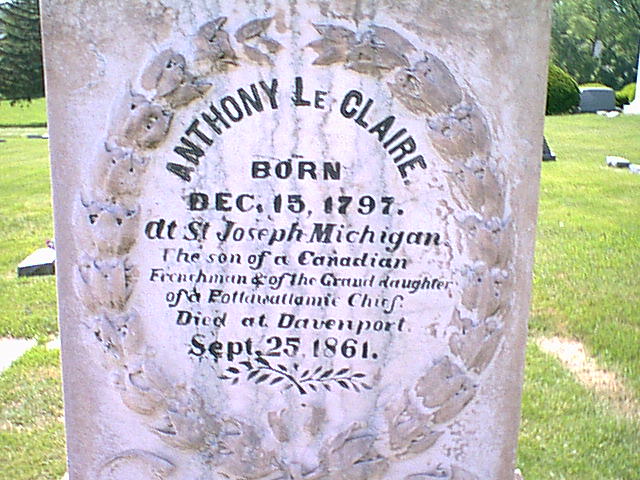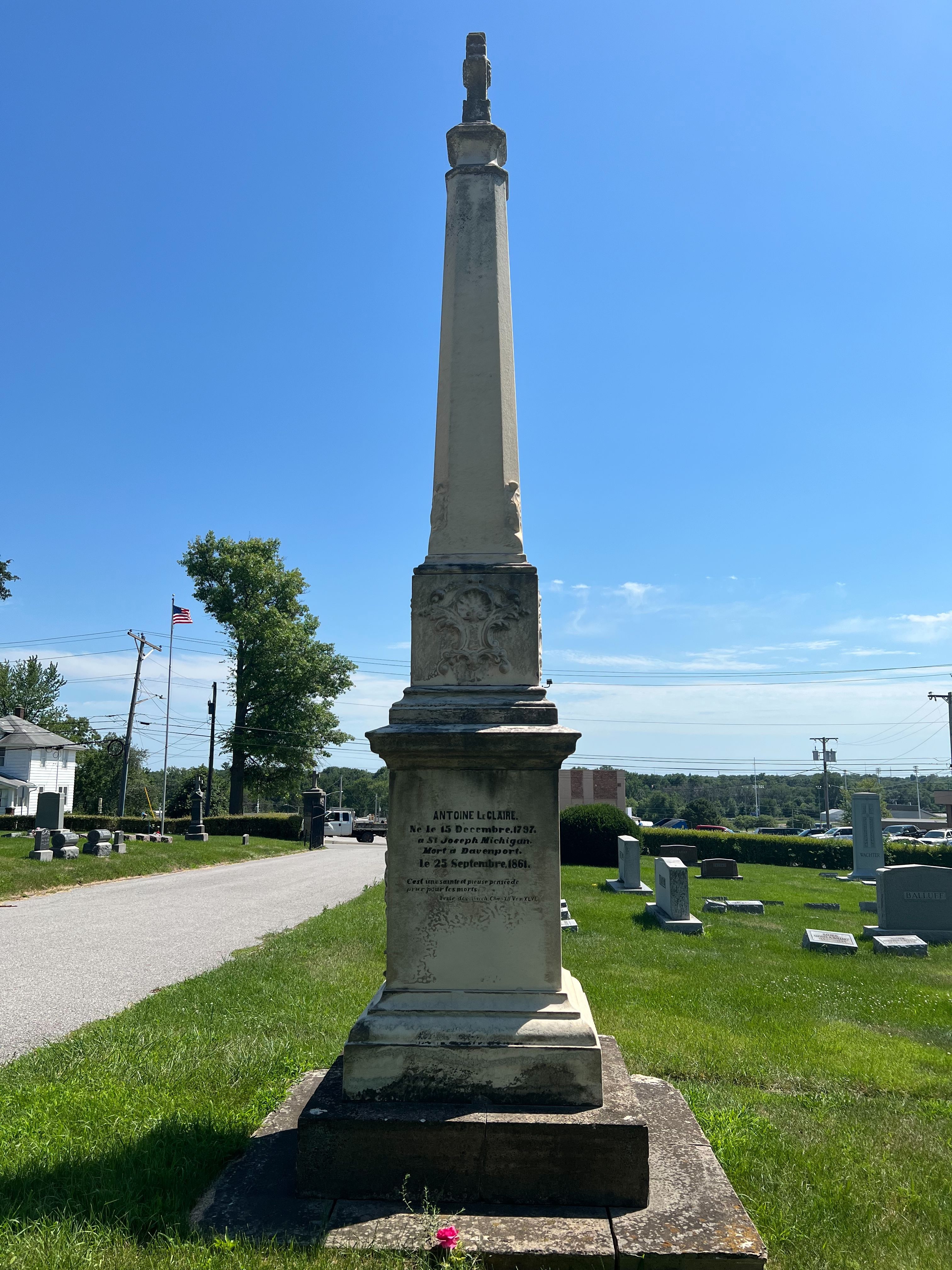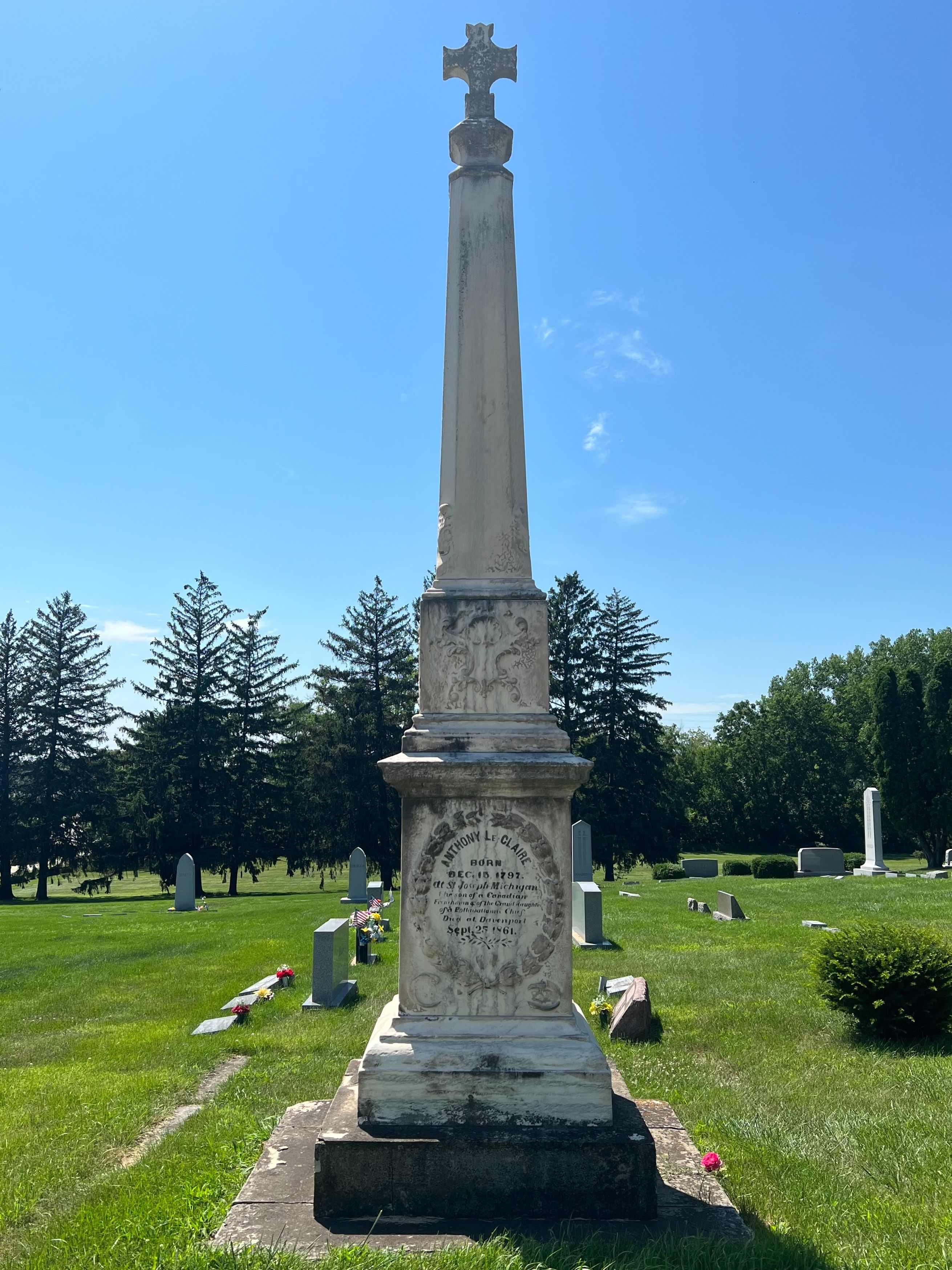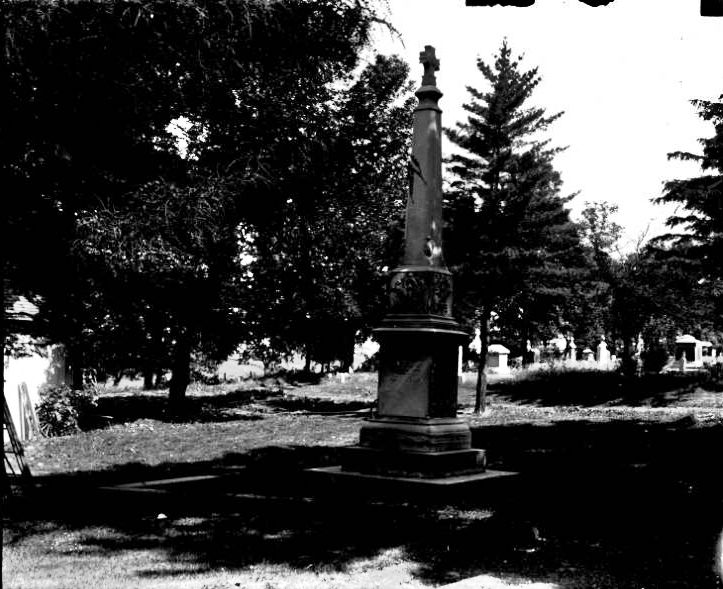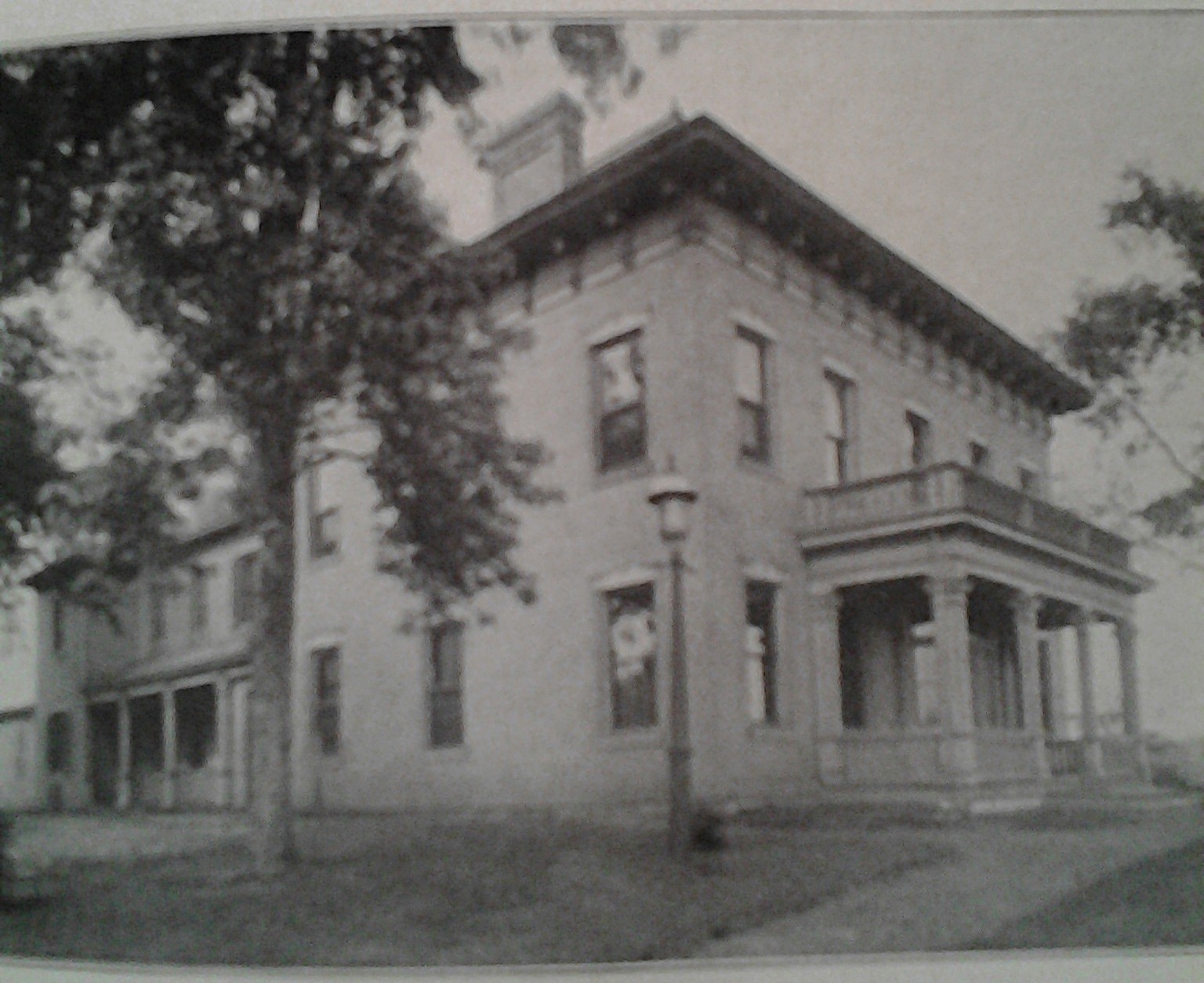He was born in modern day St. Joseph, Michigan, the son of François Le Claire, a French-Canadian and an unknown Native American woman from the Pottawatomie Tribe. Le Claire spoke English, French, Spanish, and a dozen Native American dialects.
He met his wife, Marguerite LePage in 1820 while living in Peoria, Illinois after he was employed as an interpreter for Col. George Davenport. His wife was also of French-Canadian and Native American descent. She was the granddaughter of the Sac chief of Acoqua.
At the end of the Black Hawk war in 1832, Le Claire was present at the peace treaty signing as an interpreter. Since he was held in high regard by local Native Americans, he was given three parcels of land. One stipulation was that the Le Claire's build house on the spot where the treaty was signed or they would lose the land. Once the US government approved the peace treaty, Le Claire built this house, known now as the Treaty House.
In 1833, Le Claire was named justice of the peace and Postmaster of all the land that had been included in the Blackhawk Treaty. He had many responsibilities including peacekeeping with the local Native American tribes and other settlers. The following year he established the area's first ferry service across the river. Later, Le Claire served as a translator for Black Hawk's memoirs.
Antoine Le Claire was a part of a large group of investors in the area. He owned a sizable amount of land but did not have a lot of money saved. He was the biggest push behind developing much of Davenport and yet, Davenport was not named after him due to his biracial identity and Catholic religion. He decided on a grid layout for the city, with three public squares: Lafayette Square, which is currently a public park; Bolivar Square, where the modern day Scott County Courthouse resides and Washington Square, where the downtown YMCA now stands.
He decided to name the streets after Native American tribes, including: Sac, Fox, Ottawa, Chippewa, and Potawatomie. Later these streets were renamed to 2nd through 6th streets.
LeClaire joined with Davenport to develop the first public house, named LeClaire House. He also established the first foundry and first mill. He helped bring the railroad to Davenport. He also donated land for the Catholic Church to build its first church and furnished it. His religious philanthropy didn't stop there as he also provided land for the first local Baptist church.
He also donated one of the public squares, land for Iowa College, the original Treaty House, and hosted many Native Americans on their land for long periods of time. When the bank in town failed, he personally backed up the money with his own personal savings.
Antoine LeClaire had no biological children with his wife. His half brother Alexis, who died in 1849, left behind a son—Louis, whom LeClaire adopted.
He died September 25, 1861. He was originally buried in the church yard of St. Marguerite's church but was later moved along with his wife to St. Marguerite's Cemetery— now known as Mount Calvary. Places today named after him include the town of Le Claire, Iowa, Le Claire Park in Davenport, Le Claire Hotel in Moline, Illinois and Le Claire Street in Davenport.
He was born in modern day St. Joseph, Michigan, the son of François Le Claire, a French-Canadian and an unknown Native American woman from the Pottawatomie Tribe. Le Claire spoke English, French, Spanish, and a dozen Native American dialects.
He met his wife, Marguerite LePage in 1820 while living in Peoria, Illinois after he was employed as an interpreter for Col. George Davenport. His wife was also of French-Canadian and Native American descent. She was the granddaughter of the Sac chief of Acoqua.
At the end of the Black Hawk war in 1832, Le Claire was present at the peace treaty signing as an interpreter. Since he was held in high regard by local Native Americans, he was given three parcels of land. One stipulation was that the Le Claire's build house on the spot where the treaty was signed or they would lose the land. Once the US government approved the peace treaty, Le Claire built this house, known now as the Treaty House.
In 1833, Le Claire was named justice of the peace and Postmaster of all the land that had been included in the Blackhawk Treaty. He had many responsibilities including peacekeeping with the local Native American tribes and other settlers. The following year he established the area's first ferry service across the river. Later, Le Claire served as a translator for Black Hawk's memoirs.
Antoine Le Claire was a part of a large group of investors in the area. He owned a sizable amount of land but did not have a lot of money saved. He was the biggest push behind developing much of Davenport and yet, Davenport was not named after him due to his biracial identity and Catholic religion. He decided on a grid layout for the city, with three public squares: Lafayette Square, which is currently a public park; Bolivar Square, where the modern day Scott County Courthouse resides and Washington Square, where the downtown YMCA now stands.
He decided to name the streets after Native American tribes, including: Sac, Fox, Ottawa, Chippewa, and Potawatomie. Later these streets were renamed to 2nd through 6th streets.
LeClaire joined with Davenport to develop the first public house, named LeClaire House. He also established the first foundry and first mill. He helped bring the railroad to Davenport. He also donated land for the Catholic Church to build its first church and furnished it. His religious philanthropy didn't stop there as he also provided land for the first local Baptist church.
He also donated one of the public squares, land for Iowa College, the original Treaty House, and hosted many Native Americans on their land for long periods of time. When the bank in town failed, he personally backed up the money with his own personal savings.
Antoine LeClaire had no biological children with his wife. His half brother Alexis, who died in 1849, left behind a son—Louis, whom LeClaire adopted.
He died September 25, 1861. He was originally buried in the church yard of St. Marguerite's church but was later moved along with his wife to St. Marguerite's Cemetery— now known as Mount Calvary. Places today named after him include the town of Le Claire, Iowa, Le Claire Park in Davenport, Le Claire Hotel in Moline, Illinois and Le Claire Street in Davenport.
Bio by: Lacey K.
Family Members
Advertisement
See more Le Claire memorials in:
Explore more
Sponsored by Ancestry
Advertisement
